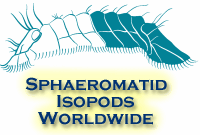| Abstract |
The bopyrid, Probopyrus pandalicola, infects grass shrimp, Palaemonetes pugio, and negatively affects shrimp respiration and metabolic activity, prevents reproductive output, and reduces shrimp activity. Our objective was to determine whether grass shrimp maintained tidal rhythmicity in the laboratory and whether the bopyrid parasite affected tide-related grass shrimp activity levels. Five bopyrid-parasitized and five unparasitized shrimp were selected, and examined for sex, length, and for number of trematode cysts (to exclude any effect of that parasite). The shrimp were randomly placed in individual static aquaria with sand substrate and filtered seawater, and tanks were separated by opaque dividers. Shrimp were maintained on an ambient photoperiod (14.5-h day) and observed for activity every three hours (corresponding with high, ebb, low, and flood water) for two tidal cycles. Tidal stage had a significant effect on shrimp activity with the maximum number of shrimp (71%) resting at flood and the minimum (16%) at ebb (n = 10 trials). There was a significant effect of light and tide-light interaction on shrimp activity with the greatest activity at night, particularly during nighttime-ebb. Because shrimp were most active during ebb, they may be more susceptible to predation by visual predators in the water column at that time. Bopyrid infection did not significantly influence shrimp activity, and thus was not the primary factor affecting shrimp activity in the first 30 h after collection |

















